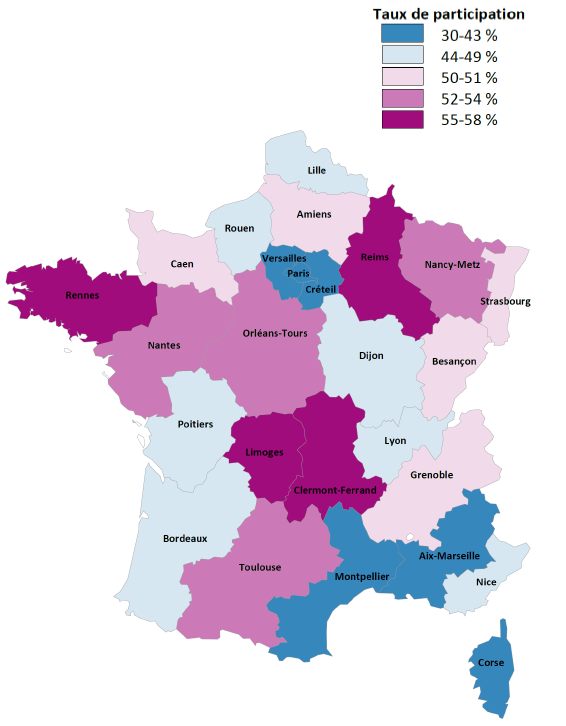Survey participation
Nearly half the eligible Elfe children took part in this survey. Participation was purely voluntary, so first the parents, then the teachers, had to give their consent.
High participation rate among teachers
Most of the teachers who were asked by families to take part in this survey agreed to do so.
They evidently took the survey seriously, as they carefully filled in both parts, namely a questionnaire and an observation grid recording how the children performed the exercises.
Only a tenth of these two documents were sent to us incomplete, and the missing data mainly concerned the most difficult exercises, particularly the phonological ones. Moreover, one third of teachers said they would like to be informed about the research findings.
Clear differences in participation according to housing density
Children’s participation in the survey was not linked to their own characteristics – that is, whether or not they were in good health or were early or late developers, according to information gathered 18 months earlier. Furthermore, children from private or state schools were equally represented. By contrast, participation rates varied markedly with housing density, being higher for children living in rural areas or small towns and villages.
Stark contrasts between local education authorities.
There were also striking geographical contrasts. The local education authorities of Clermont-Ferrand, Limoges, Reims and Rennes had the highest participation rates, and those of Île-de-France, Montpellier and Aix-Marseille had far lower ones, with even greater differences after correction for the social makeup of the local populations (see map below).


